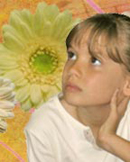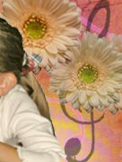- Sensing difficulties, problems, gaps in information, or missing elements
- Making guesses or formulating hypotheses about these deficiencies
- Testing these guesses and possibly revising and retesting them
- Communicating results
We have all had the “aha” moment when thoughts that have circulated in our heads finally come to a solution or an idea. A nurturing classroom environment would be one in which these “ahas” are discovered by the students themselves, facilitated by the teacher. Brainstorming is an activity that supports the creative process and is an effective way to not only generate ideas, but also nurture a creative learning environment.
 At this time, read A Guide to Brainstorming by Liz Cook.
At this time, read A Guide to Brainstorming by Liz Cook.  At this time, read 25 Useful Brainstorming Techniques. When you have finished reading, continue with the course content.
At this time, read 25 Useful Brainstorming Techniques. When you have finished reading, continue with the course content.
For the young preschool-aged child, it is generally assumed that they are highly creative, with vivid imaginations, wanting to explore, take risks, manipulate, test, and modify ideas. This excitement for learning needs to be carried through into the elementary, middle, and high school years as well, especially for the gifted child. Although teachers and administrators sometimes believe that it is more economical to learn by authority (traditional), research suggests that many things (although not all) can be learned more effectively and economically in creative ways. (Torrance, 1977) A teacher does not have to sacrifice basic skills for creative applications. Basic skills are essential in order to come up with new ideas and apply the creative thinking process, especially in the areas of math and science.
 Read Creativity in Young Children by Sara Gable. As you read think about how creativity as a process is best developed through hands-on experiences. Click on the daisy to access the article. When you have finished reading, return to the course content.
Read Creativity in Young Children by Sara Gable. As you read think about how creativity as a process is best developed through hands-on experiences. Click on the daisy to access the article. When you have finished reading, return to the course content.In Summary
Despite the fact that we can improve our intelligence to some degree, it remains radically limited by our physical and emotional environment. (Rollo May, 1975). If the physical environment and the cultural and emotional climate of the gifted classroom are free of risk, accept ambiguity and unpredictability, and encourage exploration, discovery and experimentation, then a creative environment will flourish.
Students should work at their own pace; develop projects based on their ideas, use a variety of resources, materials, and technologies to bring their ideas to fruition, and authentically evaluate what they have accomplished. Other recommendations for supporting creative learning environments are to become involved in creative activities in the community, to invite creative professionals and consultants to visit your classroom to discuss creative techniques used in business. Fostering a creative learning environment for our gifted children helps prepare them for the real world by giving them the tools to be problem solvers.
It is difficult to always have sufficient funds. However, there are grant-writing opportunities, and accessing the local community for donations to the classroom is also a great resource. Many communities offer material recycling centers where teachers can get supplies that businesses have donated. Teachers can go once a month to shop for what they need for a small yearly fee.






